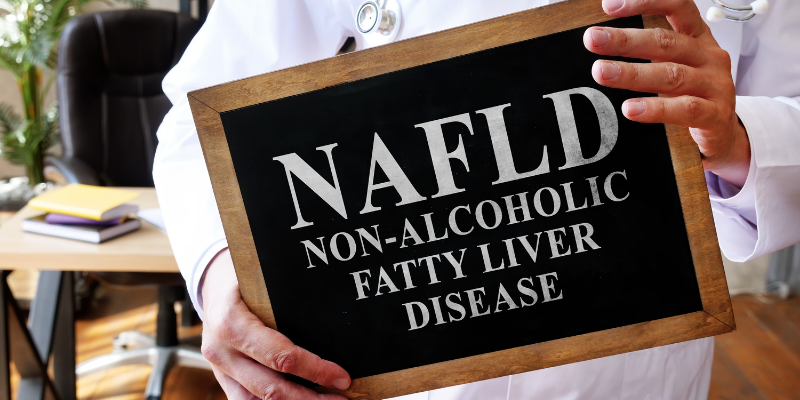NAFLD vs MAFLD: Why the debate?
Non-alcoholic fatty liver disease (NAFLD) is the most common cause of liver disease in Australia. NAFLD tends to occur in patients who are overweight and/ or who have type 2 diabetes. It is characterised by the build-up of fat inside liver cells. In some patients, this is accompanied by inflammation and a type of hepatitis, steatohepatitis (“steato-” refers to the fat accumulation and “hepatitis” to inflammation in the liver).

Jurgen Ludwig, a pathologist, came up with the term in 1980 when he and his colleagues identified a group of patients who had liver biopsies that looked almost identical to alcohol-related steatohepatitis, but where there was no alcohol involved [1]. The term coined for this was non-alcoholic steatohepatitis or NASH.
For lack of a better term, this has stuck around and been expanded to NAFLD, to include patients with fat accumulation but no associated steatohepatitis.
Those of us living with NAFLD or working with people with NAFLD know there are a number of problems with this terminology. Firstly, patients don’t like the term. When I tell a patient they have non-alcoholic fatty liver disease they often say “but I don’t drink”, they don’t hear the “Non-“. I suspect that also happens when they are talking to family and friends and leads to stigma.
To make it even more confusing, patients can have liver damage occurring from a combination of NAFLD and hazardous alcohol use. Another problem is that it is a “negative” diagnosis; you have to rule out a lot of different diseases before you can say someone has NAFLD.
A “positive” diagnosis, that includes the cause of the liver damage in the name has the advantage of focusing on causative factors and allows the research community to get to grips with the underlying problem and coming up with new treatments. This is what happened to non-A non-B hepatitis when the virus that causes hepatitis C was identified.
An international group of renowned liver specialists led by Professor Jacob George from Westmead Hospital in Sydney recently came up with a proposal to rename NAFLD as “metabolic-dysfunction associated fatty liver disease” or MAFLD, with a set of criteria for diagnosing MAFLD [2].
This overcomes many of the concerns with the old term NAFLD, and has been welcomed by patients groups around the world [3], and endorsed by some international bodies such as the Asia Pacific Association for the Study of the Liver (APASL).
However, not all experts are happy with the proposed change. A group of high profile American NAFLD clinicians and scientists have suggested it is premature to change the name without more consultation [4].
Further, they considered the use of the term “metabolic-dysfunction” ambiguous because some other liver diseases, such as Wilson’s disease, are caused by changed metabolism. In the case of Wilson’s disease, this is caused by the accumulation of toxic concentrations of copper within liver cells.
This doesn’t seem a strong argument to this correspondent because the concept of the Metabolic Syndrome is increasingly being understood in non-medical circles, and for a long time we have known that NAFLD (or MAFLD if you prefer) appears to be a feature of the metabolic syndrome for some patients.
It is likely there will be refinement of the diagnostic criteria for MAFLD over time, now that they can be tested. For now, many people will continue to use NAFLD but I suspect we will see more and more references to MAFLD.
There has been strong support for the new name from patient groups. Personally, I think the new name is a positive, reframing “NAFLD”, and I suspect MAFLD will become the preferred term in the relatively near future.
Written by Dr Graeme Macdonald MBBS (Hons), PhD, FRACP
References
- Ludwig, J, Viggiano TR, McGill DB and Oh BJ Nonalcoholic steatohepatitis: Mayo Clinic experiences with a hitherto unnamed disease. Mayo Clin Proc 1980; 55: 434-8
- Eslam M, Newsome PN, Sarin SK, Anstee QM, Targher G, Romero-Gomez M, Zelber-Sagi S, Wai-Sun Wong V, Dufour JF, Schattenberg JM, Kawaguchi T, Arrese M, Valenti L, Shiha G, Tiribelli C, Yki-Järvinen H, Fan JG, Grønbæk H, Yilmaz Y, Cortez-Pinto H, Oliveira CP, Bedossa P, Adams LA, Zheng MH, Fouad Y, Chan WK, Mendez-Sanchez N, Ahn SH, Castera L, Bugianesi E, Ratziu V, George J. A new definition for metabolic dysfunction-associated fatty liver disease: An international expert consensus statement. J Hepatol. 2020 Jul;73(1):202-9
- Shiha G, Korenjak M, Eskridge W, Casanovas T, Velez-Moller P, Högström S, Richardson B, Munoz C, Sigurðardóttir S, Coulibaly A, Milan M, Bautista F, Leung NWY, Mooney V, Obekpa S, Bech E, Polavarapu N, Hamed AE, Radiani T, Purwanto E, Bright B, Ali M, Dovia CK, McColaugh L, Koulla Y, Dufour JF, Soliman R, Eslam M. Redefining fatty liver disease: an international patient perspective. Lancet Gastroenterol Hepatol. doi: 10.1016/S2468-1253(20)30294-6
- Younossi ZM, Rinella ME, Sanyal A, Harrison SA, Brunt E, Goodman Z, Cohen DE, Loomba R. From NAFLD to MAFLD: Implications of a premature change in terminology. Hepatology. 2020. doi: 10.1002/hep.31420
